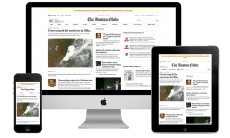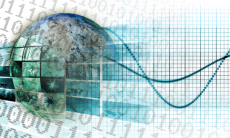Over the last two years we observed a shift from a linear perspective about how consumers behave and interact to a fuzzier, holistic perspective, with many more parameters to describe it.
People spend most of their time on the go online, and they become receivers of crazy amounts of information in real time. At the same time, we add more machine-to-machine dialogues into the perspective. These dialogues may improve our ability to understand how consumers make decisions, but they also create a more complicated field to navigate within.
In the meantime, brands get involved in a race to have access to richer and more in-detail data. They try to understand the interactions people may have with each tangible and virtual touch-point, which is a technique that seems to fail before the battle even starts. What it is missing is not more data, but a way to understand them, visualize them, and last but not least, to give the right information to the right stakeholders.
It becomes crucial to understand that it will allow us to be able to have a clear view of what is happening in the industry, in the category, or in the market. It will also make us capable of having a closer to reality forecast. This deals with the way we pull out the information and not the information itself, as well as how this can drive specific actions, especially actions with measurable results.
Therefore, the way a consumer journey is mapped, described, or optimized is not linear. It involves high amounts of emotional intelligence and it has to be made that way to drive actual deliverables and not just theories.
At the end of the day, the current consumer journey has no beginning and no end. It is an infinite loop where consumers talk with brands, exchange information and data, but also make decisions on the go based on influences no one can accurately describe.
What is the solution to this fuzzy environment? To make sure that all controllable touch points are optimized, designed, and aligned to serve the same story and vision. Those brands that don’t have access or can’t work with them, in order to make sure that they are part of an open dialogue and conversation not just marks capable to turn the consumers off or far from the brands’ purpose.
Based on this, old fashioned approaches to search or to how to use Facebook are no longer the best way to go. Everything and everyone is a search engine, a trigger to ask for more, to discover things and content. Mobile is everything and mobile everywhere is the way life and interactions should be approached. Personalization is something highly appreciated, but not in the wrong context.
To close the loop, context drives everything and everyone’s decisions or intentions. Information, interactions, and the environment we spend time in and consume content in create the context. Both address the best possible personalization for what we need at the time we want it.





